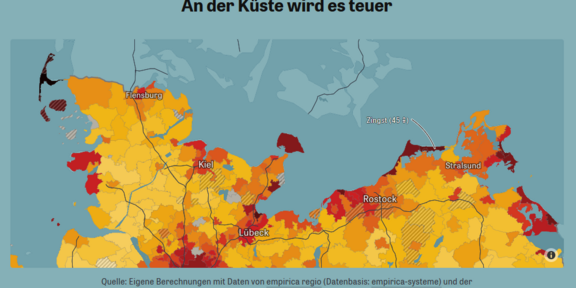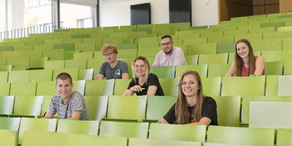‘Island gentrification’
- Research Projects

Exploding rental and purchase prices on the German North Sea and Baltic Sea islands and their consequences
- Project team: Susanne Frank, Annika Guhl
- Duration: since 2020
In-house research
In the common spatial typologies, the German North Sea and Baltic Sea islands are classified as peripheral rural areas, which are characterised by serious development problems such as the lack of a sustainable economic base, a shrinking and ageing population and endangered social infrastructures. At the same time, however, rental and purchase prices are called up there, which are usually only found in booming big cities. For example, the district of Nordfriesland has developed into the most expensive district in Germany, which ranks in price with Munich or Frankfurt am Main. But real estate markets are also exploding on many East Frisian and Baltic islands.
At the root of these developments is the conversion of permanent housing into houses and flats for the temporary use of holidaymakers or owners of second homes. This is accompanied by a severe shortage of affordable housing for the permanent population as well as for the seasonal workers indispensable for the hospitality industry. These developments, which are increasingly referred to as "island gentrification", are in turn threatening tourism, which is the only basis for local economies in these isolated areas. Combating the housing problem is made more difficult by local governance constellations familiar from research into small and medium-sized cities: the financial and human resources of the planning administration are limited, and professional qualifications are lacking. In addition, the structures of the actors are characterized by voluntary political commitment, strong personal ties and conflicting roles.
We thus find on the islands a hitherto largely unexplored mix of rural-peripheral, metropolitan and small-town dynamics. This field of tension forms the background against which we examine the “housing question” and its serious social and economic consequences for the German holiday islands. Research questions are:
- What are the economic, social, demographic and infrastructural problems facing the islands? With a few exceptions, journalistic work has so far been carried out. Above all, systematic comparative analyses are lacking.
- Which cross-island and which island-specific causes can be identified?
- What concepts are appropriate to describe and interpret the prevailing problems?
- Gentrification? If so, what kind of gentrification is involved (tourism gentrification, rural gentrification, island gentrification...)?
- “Syltification” / “Syltification”? What makes the other islands different from Sylt?
- Tourism? Over-tourism?
- Amenity migration and multi-location?
- If all this doesn't fit right, which concepts would be more appropriate?
- What are the options for tackling the housing problem? Why are existing policy and planning tools so seldom used? Why is the cross-island search for solutions so difficult?
- How does the situation on the islands compare internationally?




